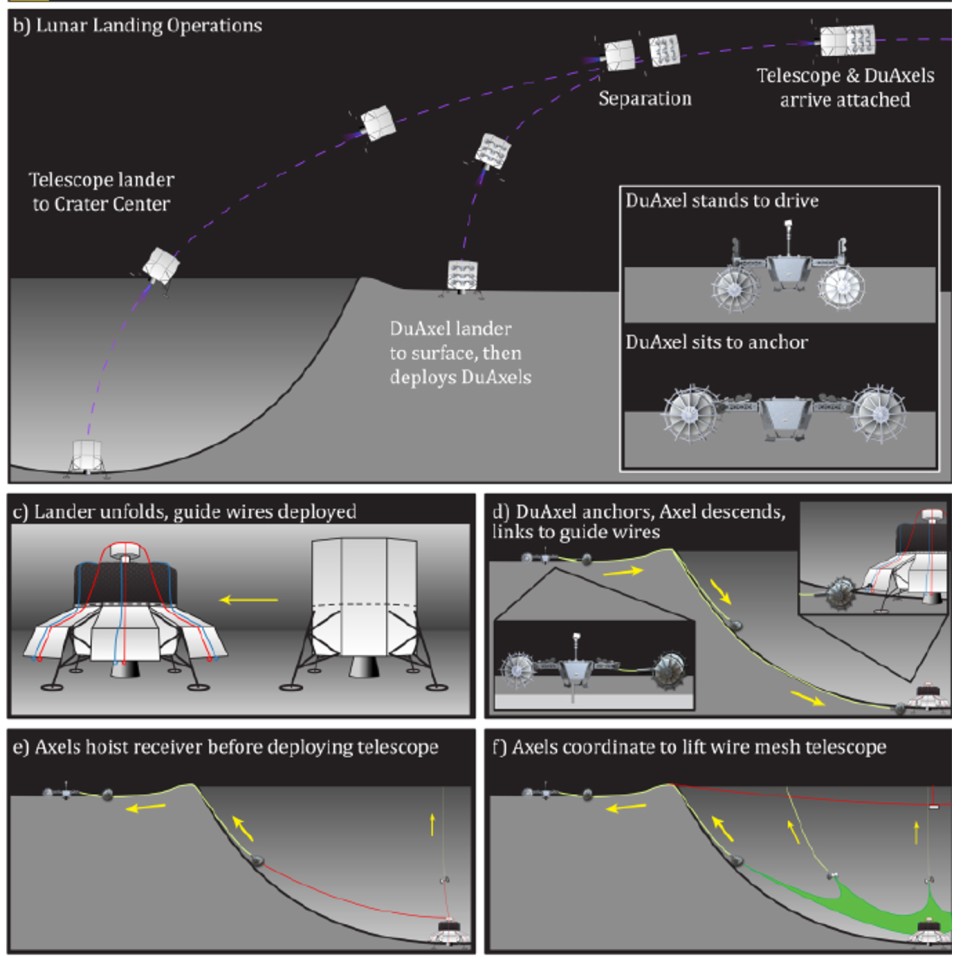NASA is exploring the potential of building an enormous radio telescope on the far side of the Moon in a vast, hollowed-out crater. The telescope’s reflector would be comprised of a 1-km (0.6-mile) diameter wire mesh that would be pulled into place by wall-climbing robots.
The telescope has been funded under the NASA Innovative Advanced Concepts (NIAC) program, which fosters the development of some of the wildest and, as the name suggests, innovative projects that could one day revolutionize science and exploration missions.
Space agencies around the globe are trying to find the most imaginative and practical ways to make use of the resources already present on solar system bodies – such as the Moon and Mars – in order to make ambitious projects a reality. This is because in-situ resource utilization doesn’t require massive amounts of materials to be transported from Earth into space at an average cost of US$10,000 for a 0.45-kg (1-lb) payload.
It is, therefore, hardly surprising that the idea of using the Moon’s own geography to construct a vast radio telescope garnered NIAC investment.
Under the current proposal, a telescope lander, which would presumably host the main science payload, would descend to the center of a 3-5 km (1.8-3.1 mile) diameter crater located on the far side of the Moon. A separate lander, containing the rovers designed to construct the telescope, would land beyond the rim of the crater.
The rovers would move into position around the rim, and send a component down to rendezvous with the telescope lander. Once there, they would connect themselves to guide wires that would then be used to hoist the observatory’s receiver and its reflector into place – suspended high above the crater floor.

Saptarshi Bandyopadhyay
Radio waves, such as those that the proposed Lunar Crater Radio Telescope (LCRT) saturate the cosmos. They are emitted by a wide array of extraterrestrial objects including planets, stars, supernova remnants and the galactic center.
Earthbound observatories have made great strides in revealing the radio fingerprint of the cosmos, however they are bound by certain restrictions. Ground-based telescopes constantly contend with radio interference stemming from Earthly sources, technological and otherwise.
Even without interference, It would be impossible for an Earthly telescope to probe the full breadth of radio wavelengths emanating from extraterrestrial sources. This is because wavelengths greater than 10 m (33 ft) (frequencies below 30 MHz) are reflected away by our planet’s powerful ionosphere.
The LCRT however would have no such trouble observing these hitherto unexplored wavelengths, as it wouldn’t have to peer through Earth’s dense atmosphere. It’s position on the far side of the Moon would also shield the delicate would-be telescope from radio interference emanating from Earth.
If the LCRT were ever to come to fruition, it would be the largest filled-aperture radio telescope in the Solar System. Its 1-km reflector would be twice the size of China’s terrestrial FAST observatory, which has a reflector spanning 500 m (1,640 ft), and is currently the largest filled-aperture radio telescope ever constructed.
The telescope has been accepted into the first phase of the 2020 NIAC program, which grants $125,000 to explore the viability of the project and develop it over the course of nine months for submission to phase two.
Source: NASA
Source of Article